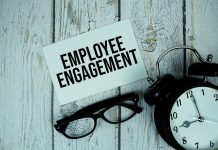
The Rapid Evolution of Skills
In today’s rapidly evolving job market, the need for skills changes quickly, and those that were once essential may no longer be relevant. Technological advancements, especially in accessing and using information, have significantly altered the landscape of effective and productive work. For many people, the skills that initially secured their positions have evolved to the point where their current job functions are nearly unrecognizable.
Traditional skills assessment methods are either outdated or rely heavily on self-assessment, which can be subjective and inaccurate. This poses a significant challenge for companies: how can they objectively, promptly, and unbiasedly assess their employees’ skills? Companies need methods that provide real-time insights into their workforce’s capabilities to remain competitive.
The Challenge of Managing Workforce Skills for Enterprises
Managing workforce skills presents unique challenges:
- Skill Velocity: Skills and cross-skill relationships rapidly emerge and disappear, often augmented or replaced by AI. Static skill taxonomies are ineffective in capturing this dynamic landscape.
- Skill Visibility: New skills can be acquired in days, but they are not always captured in surveys and profile updates, leading to “shadow skills” that remain undetected.
- Skill Validation: There is often a significant difference between stated and presumed skills versus those validated with evidence. Dormant skills can be mixed with active ones, complicating accurate assessment.
These challenges highlight the need for a dynamic and comprehensive approach to skill management. Enterprises must adopt solutions that can keep pace with the rapid evolution of skills, ensuring that their workforce remains capable and competitive.
Getting the Upper Hand
These challenges can be addressed by systematically evaluating employee-related documents and work products across the organization while ensuring everyone’s skills are assessed using a standard lens and standardized evaluation techniques. AI-enhanced technologies can infer skills and proficiency levels, even when specific skills are not explicitly mentioned in the data. By automating data ingestion, the inference and presentation of skills and levels can be nearly real-time.
While employees can track their skill development and leadership can gain a comprehensive view of the company’s progress, identifying skills and skill gaps is only part of the equation. Companies also need to determine whether their workforce is equipped to compete in the future. As the market continues to evolve and make advancements, businesses must adapt and innovate to stay ahead.
New skills are constantly emerging, making it critical for employees to acquire these competencies to keep pace with the rapidly changing work environment. For instance, businesses worldwide are grappling with how to leverage AI. Companies must modernize their strategies, product lines, processes, and customer interactions to harness this technology’s potential. The pressure to be efficient and innovative is immense, compounded by the threat of competitors achieving solutions more quickly.
Employees face the dual stress of job insecurity due to AI, particularly with LLMs that can produce quality work in seconds, and the challenge of developing themselves professionally. The question of how to grow and adapt in this new landscape can be perplexing.
AI-enhanced technologies can again help by providing comprehensive skills gap evaluation of employees and the organization. They can identify emerging skills and those strategically important for development, presenting these as opportunities for employee skill growth. Companies can create strategic plans that focus on capability needs across the organization and monitor the growth of essential skills.
While several products promise the power of AI, the right ones will democratize growth opportunities, ensuring they are not reserved for a select few but offered broadly. AI helps identify the best ways to prepare the organization for future needs, fostering an environment of trust and loyalty between employees and management. This alignment supports both individual development and organizational success. By identifying critical skills and gaps, organizations can confidently plan for the future. This proactive stance ensures that the workforce is prepared to meet upcoming challenges and opportunities.
Real-time data on skill development means companies can adjust their strategies as needed, keeping pace with industry changes. This agility is essential in a competitive market where the ability to adapt quickly can be the difference between success and failure.
Companies can then support a culture of continuous improvement, where employees are encouraged to develop new skills, stay updated with industry trends, and contribute to the organization’s growth. This culture of learning and development benefits both the employees and the company, leading to higher job satisfaction and retention rates.
Moreover, the right technology will promote transparency and fairness in skill assessment and foster trust. Employees can see their progress and understand what is needed to advance, while managers can provide targeted support and development opportunities.
Conclusion
The rapid evolution of technology in the workplace demands a new approach to skill assessment and development. The right AI-enabled technology will offer a comprehensive solution that addresses these needs, providing real-time, unbiased, and objective evaluations of employee skills. Companies can stay competitive and future-ready by identifying skill gaps and emerging competencies.
The approach where growth opportunities are accessible to all employees, fostering an inclusive and supportive work environment, creates an alignment between individual and organizational goals and a culture of trust, loyalty, and continuous improvement. This positions companies to thrive in technological advancements and market changes.
As the workforce continues to evolve, choosing the right AI-enabled technology will be indispensable in helping companies navigate the complexities of skill management and development, ensuring they are well-prepared for the future.




